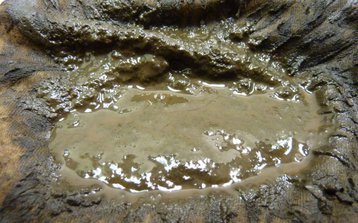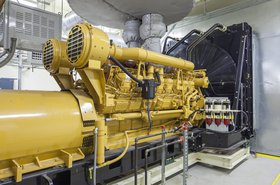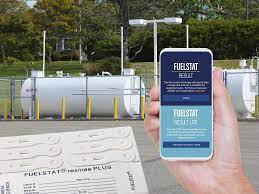While we all welcome the increased use of biofuels such as biodiesel to reduce carbon emissions, data centers need to be aware of the additional risks this poses to backup generators. The increased use of some bio component/material within the fuel industry makes the environment within the fuel tank more appealing to micro-organisms. Present in large concentration, these can create issues by blocking filters and corroding metal parts within the fuel system – issues which are not likely to be covered by generator OEM warranties.
What causes this corrosion?
The change in diesel fuel specifications with the allowance of Fatty Acid Methyl Esters (FAME) commonly known as biodiesel, combined with the reduction of sulfur make the fuel more hygroscopic and therefore more susceptible to microbial contamination. There is always some level of water present in the fuel as it enters throughout the fuel supply chain through condensation, rainwater penetration, or adsorption from the air.
The combination of nutrients in the water and the carbon in the fuel create a thriving ecosystem for microbes to grow. The speed at which they grow will depend on environmental factors, such as temperature and humidity, but as communities of these microbes breed, they create biomass and biofilms that can block filters, foul equipment, corrode metals and ultimately, can cause catastrophic engine failure. The hygroscopic nature of biodiesel also means greater potential presence of water molecules available for microbes to develop and grow., Microbial contamination will increase the risk of injector damage and filter blocking.
[Proponents of alternative fuels argue that newer generation fuel such as hydrotreated vegetable oil evade these problems - Editor
Why is this a particular issue for data centers?
The challenge for data centers is that their back-up generators, critical to keeping them online in the event of a power failure, may often lie idle for long periods.
Since the adoption of ultralow sulfur diesel back in 2006, authorities such as the US Environmental Protection Agency (EPA) have documented the increased
During this time, with the biodiesel blended fuel resting in the tank, the microbes have greater opportunity to multiply and create the large communities that create biofilms that will cause fuel system issues. With the use of biodiesel blended fuel, the potential risk of greater water content is higher and therefore, a better environment for microbes to reproduce is created.
What steps should data centers take to protect their backup gensets?
Modern backup generators are high-pressure common rail (HPCR) models and higher pressures mean greater risks of damage or failure. Emulsified water in the fuel enables microbes to multiply, which can create acidic compounds that can cause pitting and corrosion. Alongside the risk of part failures, pitting within the injector system can also cause the engine to become over-fuelled, resulting in temperature rises, increased emissions and higher fuel consumption. Therefore, minimizing the water content within the fuel is a priority. Filters designed to the latest SAE J1488 Recommended Practice help remove emulsified water from the fuel, which should be kept below 200 parts per million (ppm) of total water content, which is the usual OEM warranty limit. The fuel should be filtered three times a week and the complete volume of fuel filtered within an eight-hour period.
Maintenance programs should also check how long fuel has been stored in the generator tanks. Biodiesel blends typically have less shelf life than non-biodiesel diesel fuel such as ultra-low sulfur diesel (ULSD) and are therefore more susceptible to oxidation. Oxidation products combined with higher water content containing fuel will contribute to fuel degradation with greater the risk of microbial contamination.
For these reasons, data centers should implement a fuel testing and tank inspections program to ensure costly failures are avoided.
Regular visual tank inspections can reveal signs of excessive water bottoms which can cause tank corrosion. Presence of tank bottom contaminant in the form of dark, slimy matter is indicative of fuel degradation and most likely microbial contamination. Taking regular fuel samples for the bottom of various storage tanks (main storage tanks, belly tanks, and day tanks) will provide a qualitative assessment of the fuel. Fuel should be clear and bright at room temperature and should not display persistent haziness nor sediments and/or microbial contamination. If tests show evidence of fuel degradation and microbial contamination, the fuel should be filtered and/or replaced while the tanks should be cleaned.
Filtration systems are recommended to reduce particulate or other forms of foreign material contamination. They should be designed with the ability to sample the product both pre- and post-filtration.
How to test
Traditionally, storage tank fuel samples are taken and sent to a laboratory for testing. However, regarding microbial contamination, this creates issues as the community of microbes may change during transit if the sample is not stored correctly. It also means a delay in test results.
The Standard Guide for Microbial Contamination in Fuels and Fuel Systems, ASTM D6469 – 14, states in Section 8.5 that: “Samples for Microbiological testing should be kept on ice for transport to the laboratory. Tests should be performed within 4 h and no later than 24 h after sampling. Samples stored at higher temperatures, or for longer times, can show the presence of microbial contamination that does not represent actual fuel system conditions.” Overall, it makes more sense to carry out testing onsite to avoid these issues altogether.
Fuel testing carried out ‘at the tank’ provides quicker and more reliable results. This takes just a matter of minutes without the need for specialist training or skills. Such onsite testing kits can save thousands in repair costs, protect mainframes from damage due to power outage and provide data center customers with greater security for their data.
While the goal is to prevent loss of service, data centers should also avoid unnecessary maintenance costs. Tank cleaning, replacing fuel and installing higher efficiency fuel polishing systems will all help to prevent failures, but, in themselves, they add considerable cost to operations. While there are recommendations about how often such operations should be carried out, different environments mean each site will have different maintenance and testing requirements. Testing fuel at the tank provides a route to predictive maintenance schedules. Over time, results can be recorded to show trends of microbial growth and alongside better understanding of maintenance requirements, tank testing regimes can be adjusted accordingly for optimum frequency.
Summary
Back-up power is a mission-critical part of data center infrastructure. A genset failure could mean damage to mainframes and other assets, loss of data and damage to a brand’s reputation. Good fuel management should be an integral part of maintenance operations with visual and at-the-tank inspections at the heart of the regime to help avoid corrosion, damage or blockage of fuel systems and engine failure.
Biodiesels are now commonplace and are a good move to help reduce environmental impact, but the change in chemical composition of these fuels should not be ignored and testing regimes should be adapted accordingly to allow for their increased affinity for water and the more attractive environment they provide for microbes to multiply.
Testing kits offer quick, easy to use onsite testing solutions that provide reliable results, indication of levels of microbial contamination and a way to monitor the contamination over time using a simple mobile app, without the need to control the environmental conditions of samples sent to a laboratory.







